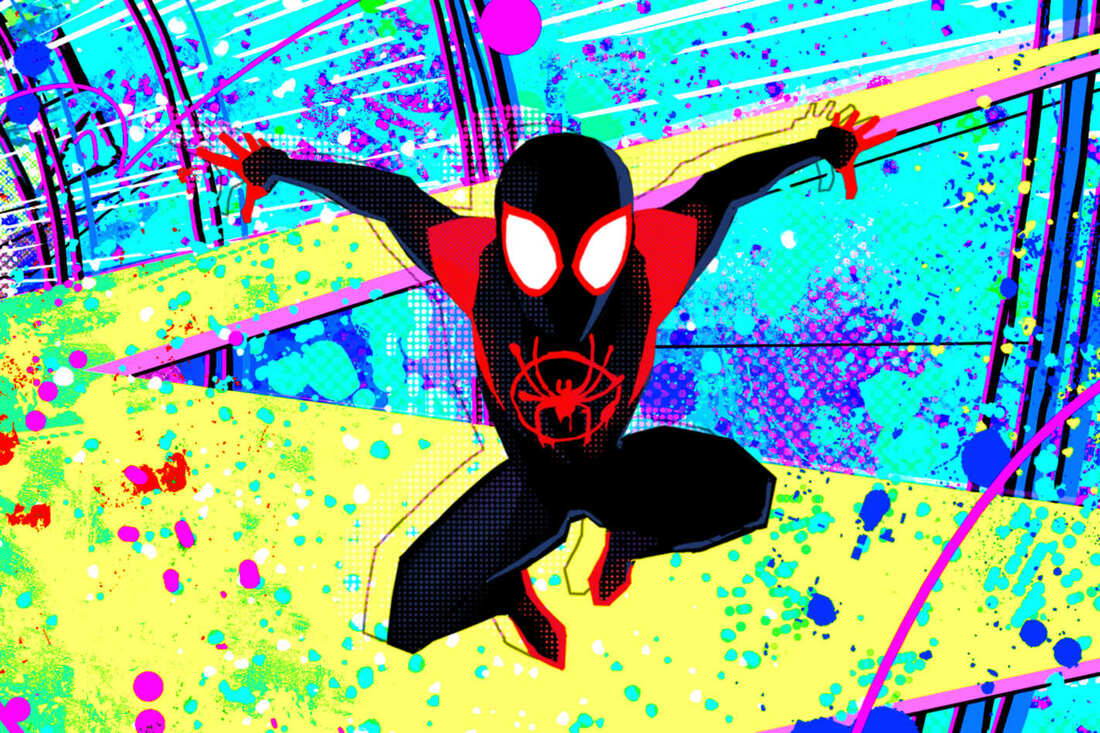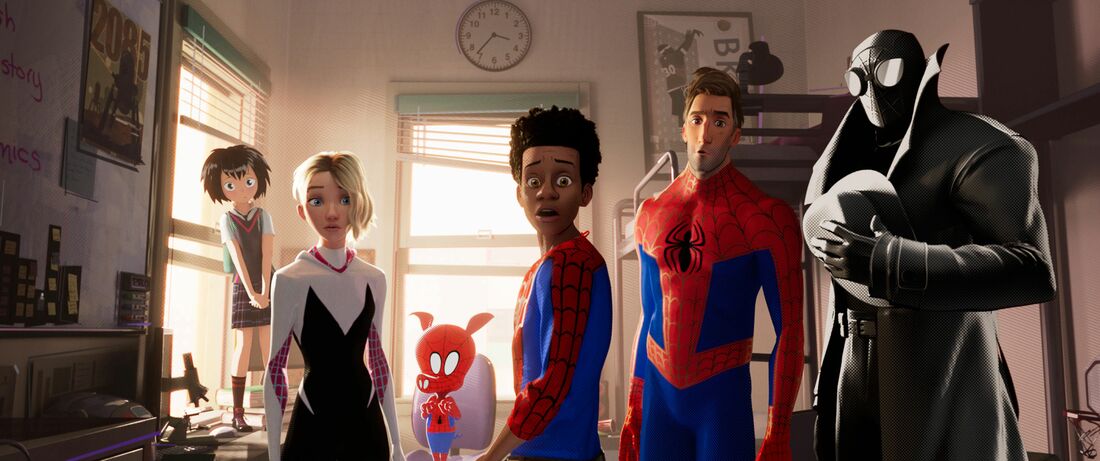Animation seems to be the perfect genre for incorporating comic book storytelling because like it too is an animation built on the foundation of illustration. The stylized visual elements of comics seem much more at home in a drawn environment because both art forms stem from illustration. To see an example of this style attempted in live action (with very different results) is Hulk (Ang Lee, 2003) and Scott Pilgrim vs the World (Edgar Wright, 2010). Hulk’s use of panel transitions comes off as distracting and overall doesn’t fit the aesthetic set out by the film. It distracts rather than enhances. Scott Pilgrim vs the World establishes a world in which the comic book and videogame aesthetics can coexist. Down below are some examples of how Hulk and Scott Pilgrim vs the World utilized this style.
| | |
Spider-Man: Into the Spider-Verse is a love letter to comic book storytelling, superheroes, and Spider-Man. It represents the possibilities of looking at things through a different perspective. Superhero stories must allow for stylistic experimentation, just like how any other medium or genre must develop and grow in order to stay alive in the moviegoers mind and heart. By bringing in comic book storytelling that allows for diverse design, and characters that serves those characters and these stories, Spider-Man: Into the Spider-Verse brilliantly marries animation and comic book storytelling to create a Spider-Man film unlike any other. And when there have already been so many Spider-Mans in live action and animated shows, that’s saying something.
WORKS CITED
WIRED, director. YouTube. YouTube, YouTube, 22 Mar. 2019, www.youtube.com/watch?v=l-wUKu_V2Lk.



 RSS Feed
RSS Feed
